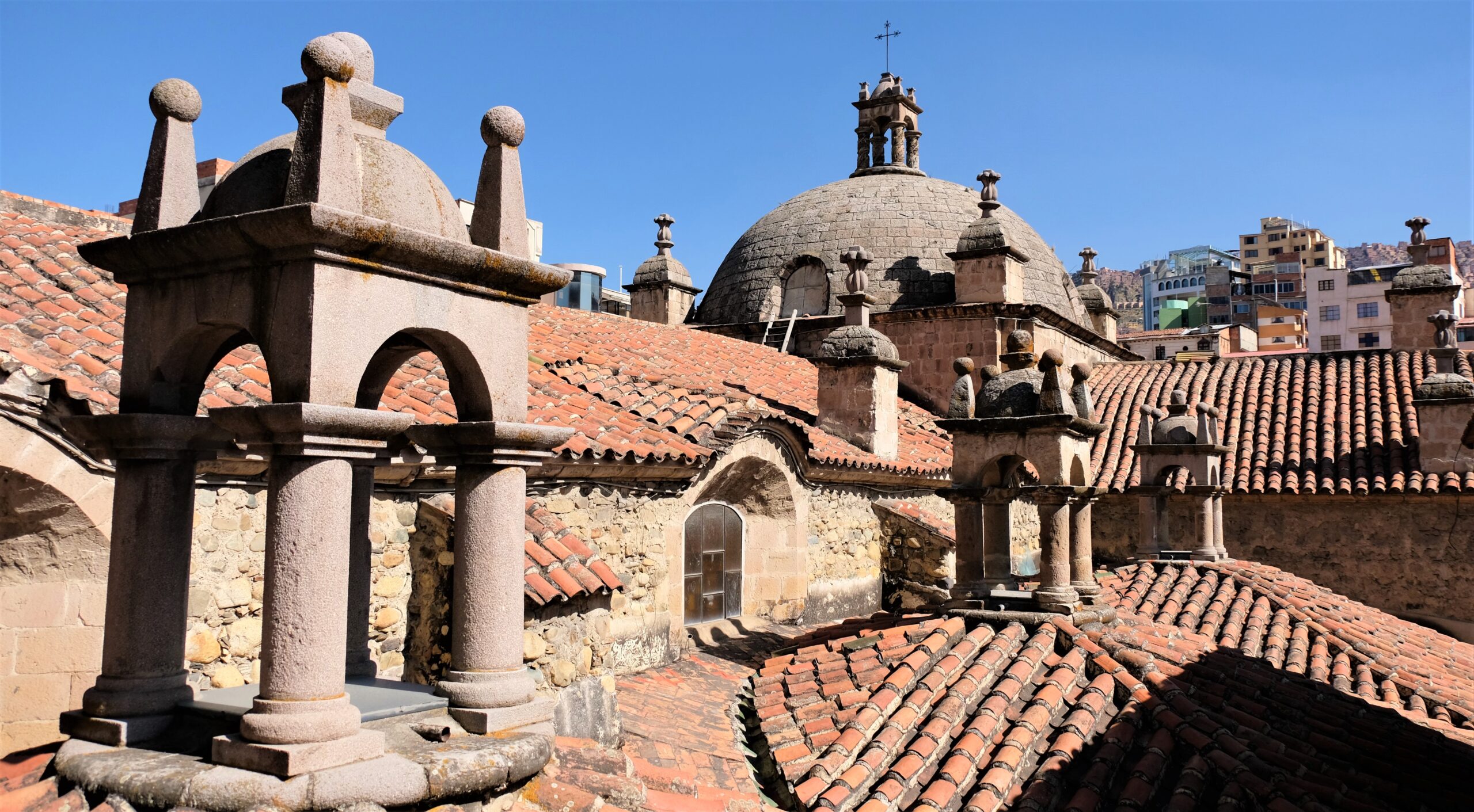La Paz, and Bolivia for that matter, got off to a very slow start. Everyone I know who had been to Bolivia raved about the country. I had done no research or planning other than arranging my flight here and accommodation. The only thing I had in my to do list was the salt flats in Uyuni; I didn’t even know how to get there yet. Arriving in La Paz I felt a little lost, having been in Cusco for a while I had started to feel familiar with the city and its surroundings. Now I felt like a fish out of water again…same feeling I have every time I arrive in a new country.
On the day of my arrival, and the next were very unproductive. I can hardly say my third was much different. When this happens I start feeling a little anxious, a sense of wasting time yet not knowing exactly what to do or where to go; to a large degree this is self-inflicted caused by little to no planning. Best way for me to get rid of this feeling is to start walking. Walk anywhere in any direction, just get the body moving. So, this post will be short and more about practicalities. I only pondered around the nearby neighbourhood and visited Basilica of San Francisco. What I can guarantee, is that Bolivia may have started lethargically, gradually speeding up to a sprint! Now I understand why everyone I’ve spoken to speaks so fondly of Bolivia. I thought Peru was varied, Bolivia is on a different stratosphere.
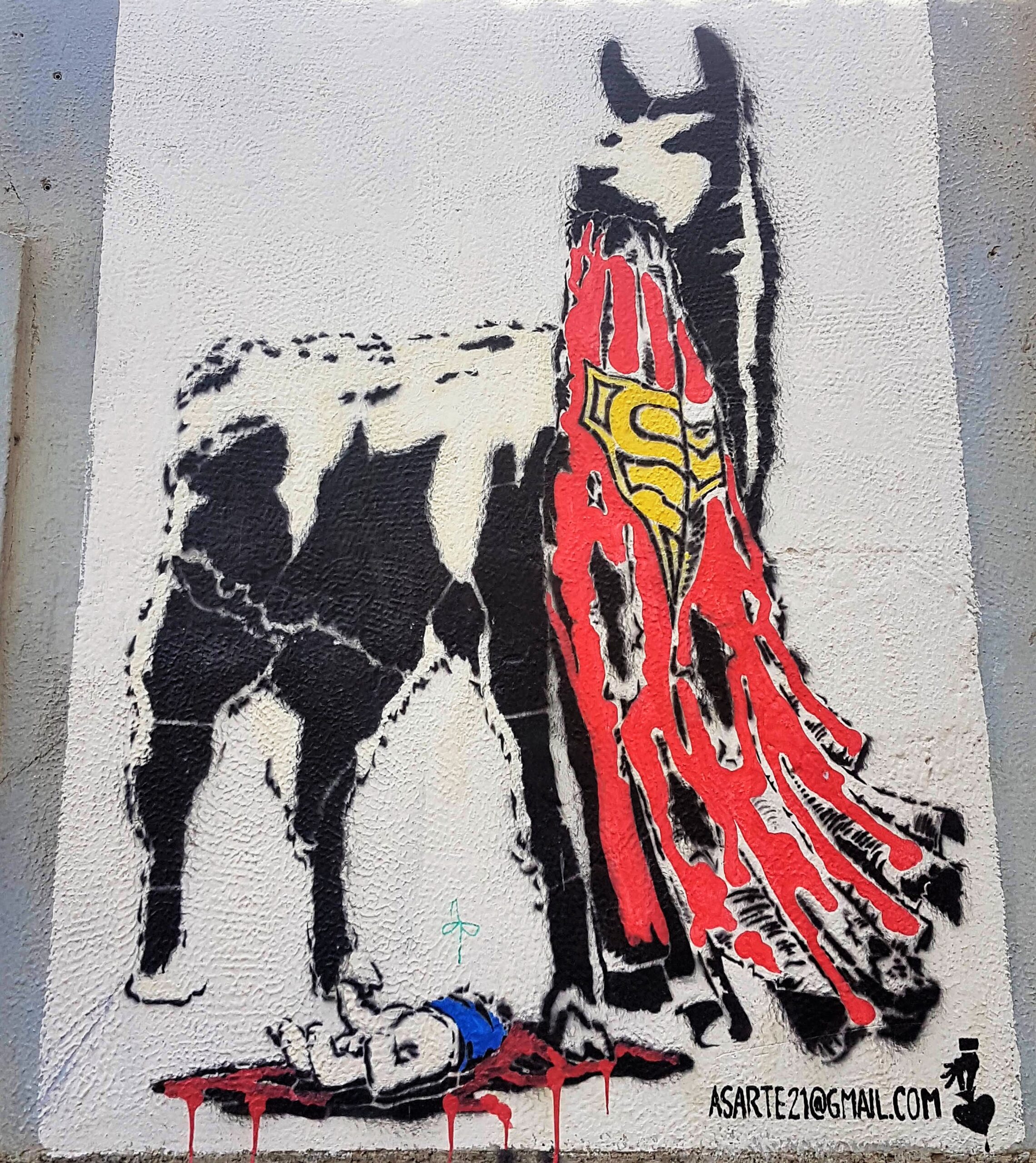
Where to stay in La Paz
There are 7 districts (Macro Districtos) in La Paz, these are divided further into more districts/zones:
- Mallasa (1st Main District): What the locals call the Southern District. This is the most affluent area of La Paz and also the lowest region of the city at 2800-3200m above sea level. Here you will also find some of the large international finance houses, the area is seen as the second commercial & financial centre.
- Distrito Sur(2nd Main District – South District): Also part of what the locals call the Southern District.
- San Antonio (3rd Main District): Part of what the locals call the Northern District
- Periférica (4th Main District): Also part of what the locals call the Northern District
- Max Paredes (5th Main District): Again part of what the locals call the Northern District
- Distrito Centro(6th Main District – Central District): Centro (downtown), Casco Viejo, Miraflores are the main neighbourhood in this district, where most tourists stay. I stayed in Zona Rosario/El Rosario which is in the heart of this district too
- Cotahuma (7th Main District): San Jorge, Sopocachi, San Pedro are the main neighbourhoods in this district
So, where to stay?
La Paz is a hilly city. The city makes Amman and Cusco or any other city I’ve visit seem flat! Centro is where most of the tourists stay and with good sense. You may find a place only 1km from the thick of it but need to buy mountain climbing kit just to get to your accommodation (yes, that is an exaggeration)! Still parts are exceptionally steep. For the little extra in cost, it pays off with the ease of getting about and speed of access. I chose Zona Rosario/El Rosario because if really is in the epicentre of everything and doesn’t feel fake. Putting it bluntly, El Rosario is the most touristy area and feels the least tourist hotspot of any country I’ve been to – hope that makes sense.
I stayed at Hotel Sagarnaga, nothing fancy though seen as a “nice place”, it cost £20 per night, that’s expensive. It had air-conditioning, wifi, TV and own bathroom. Facilities included a small restaurant/bar so compared to other places this would fall into the good-middle range. Of course there are more expensive places, there are many much cheaper places too. If I went back to La Paz I would go there as a first point of call – that should say enough.
Where to eat in La Paz
I’m no foody, though I’ll try most things at least once. Thinking back, I can’t I’m confident there weren’t any KFC, McDonald’s type places…thank goodness! That’s another indication of just how none-touristy the place is, not to mention how unwestern (I know that’s not a word) La Paz is; I mean that in a positive way. I ventured to a few places, all within 200m of my accommodation. Reasons for this will become apparent throughout my time in La Paz; using the city as my base to do day trips. Sometimes local food works for me, other times….uuuuh, not really – La Paz (Bolivia) falls into the latter category. The food isn’t bad, however after a long day out I just needed something that looked and appetising and at least tasted ok.
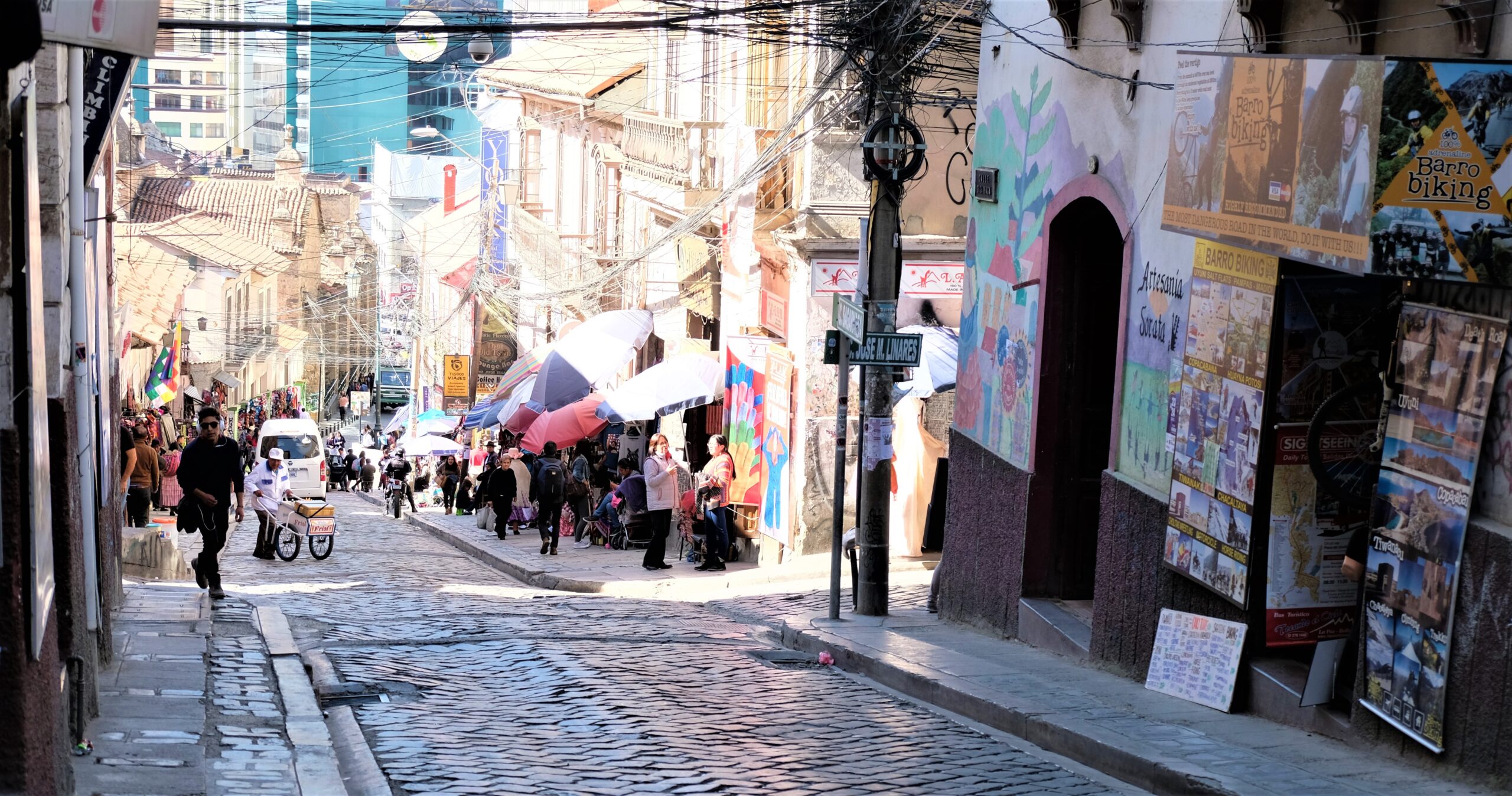

Café del Mundo
I can recommend two great places to eat. I’ll cover the second place in a later blog, but first is a place that became my “local”, Cafe del Mundo. Coincidentally and thankfully it is next door to Hotel Sagarnaga! The place has a great story to tell too; it was started by a Swedish lady after travelling around the world – take a look at their web site for the whole story. Anyway, it meets the needs of travellers and understands travellers too. The food is awesome, so are the prices and service is even better. Good wifi, rustic yet comfortable setting, decorated with pictures taken by Elin (the owner) during her worldly travels. The food is a mixture of dishes from around the world including local food. I don’t recall dedicating a section of a blog to any restaurant in any of my previous blogs.
Café del Mundo is more than just a café/restaurant. It’s where you can meet other travellers, share ideas, lounge about for the whole day whilst researching and planning. They even have a little section with a mattress couch if you would like to stretch out to relax your weary legs. When I first saw the place having read about it, I assumed I was at the wrong place. An entrance like a small takeaway coffee shop hides the main restaurant which is upstairs. Don’t expect Michelin star food, expect good wholesome food, at good prices in a great environment for travellers/visitors. I ended up meeting a few people there some, which I’ll get into later, I spent time with on day trips. Many where we passed on ideas and suggestions on destinations and routes to get there; these were priceless. I never took any pictures so check out their website.

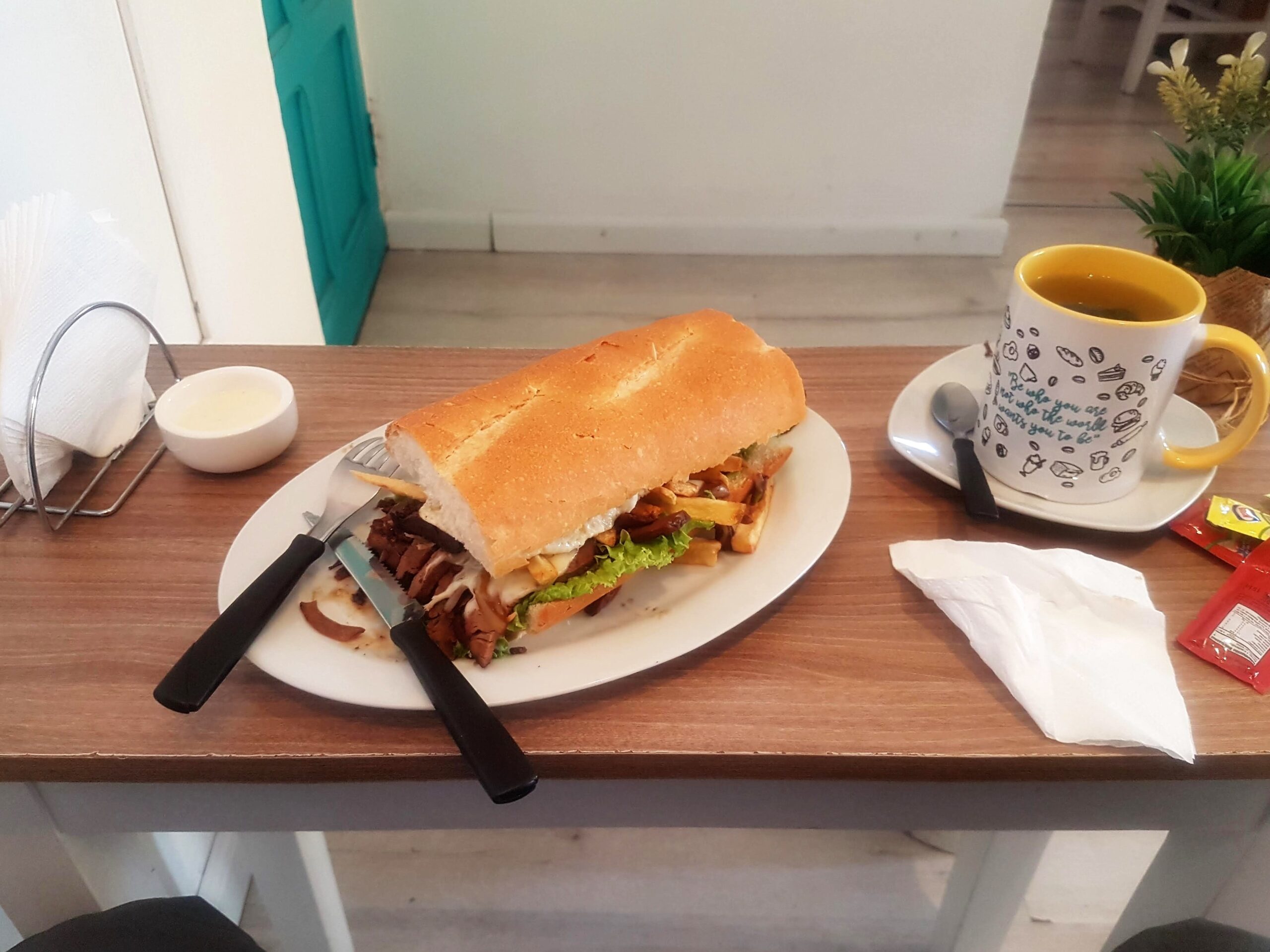
La Paz Background
Our Lady of Peace, the English translation of La Paz’s official name Nuestra Señora de La Paz. To the Aymara people (indigenous people of the Andes and Altiplano region) it is also called Chuqi Yapu (Chuquiago), more about them in later posts. The city is Bolivia’s National Capital, Sucre their Constitutional Capital which I visit later. Including La Paz’s metropolitan areas it is the most densely populated city with 2.3 million people. On average the city sits at 3650m above sea level, yet parts of it are at 2800m and up to 4000m! Thankfully I had become acclimatised from Cusco, still there were days I could feels its effects acutely. La Paz is the highest altitude capital city in the world.
The weather feels weird considering the altitude. Rainy Summers and dry winters with an unusual subtropical climate considering the altitude. I was there is June and struggle to explain the mixture of altitude and dryness. It felt like a constant dryness at the back of my throat, no amount of water could quench. Then in parts the lack of oxygen seemed to exacerbate it, walking/hiking taking in big deep breaths. I thought Cusco was dusty, La Paz felt far worse. It’s not a dirty city by any stretch of the imagination, on the contrary it was actually very clean. No garbage lying about, no cigarette butts etc. Bolivia is economically very poor, the poorest country I have been too…so much more on this topic as I write about my time there.
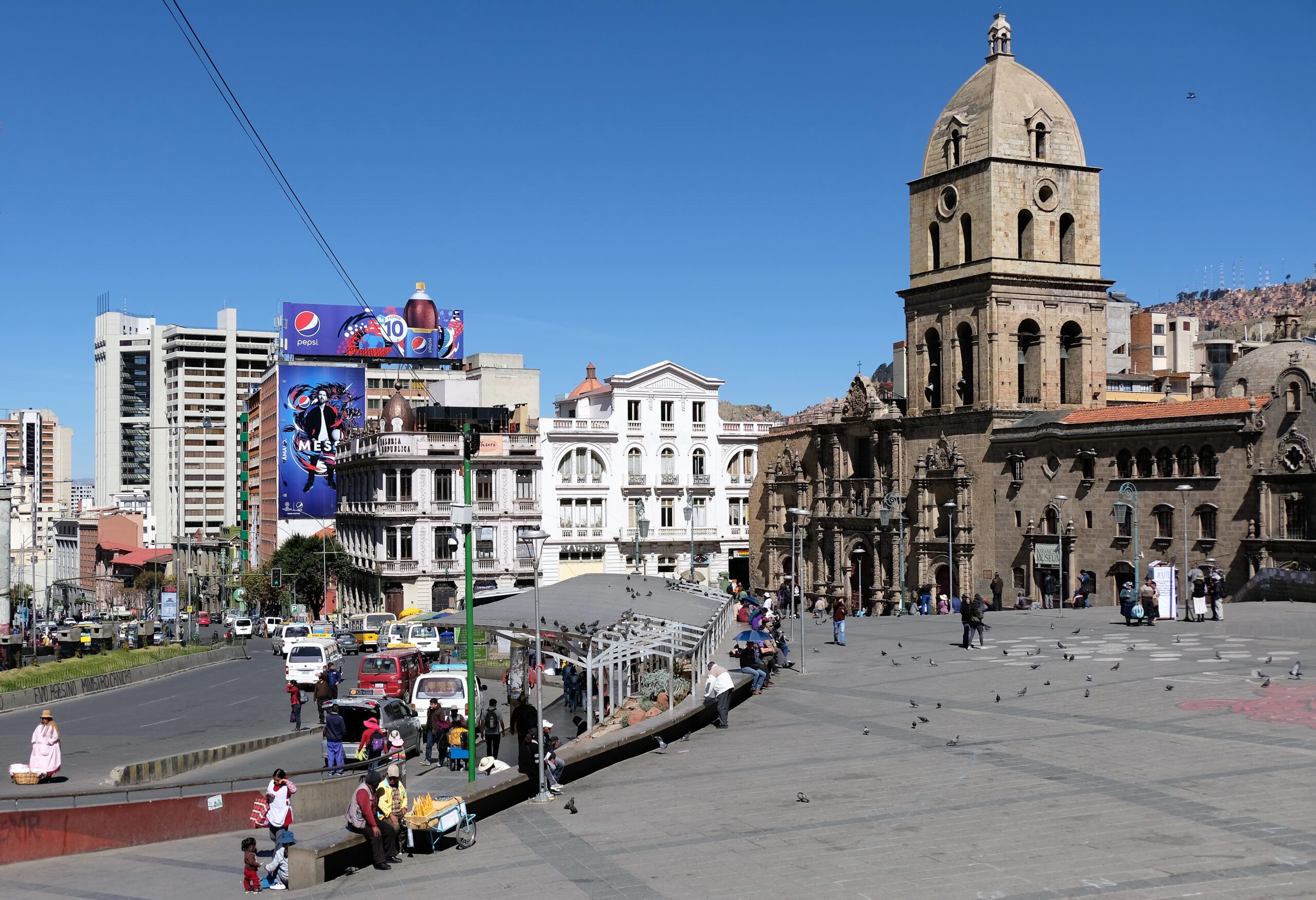
History
The Inca Empire stretch far and wide from its capital city Sacsayhuamán/Saqsaywaman, into parts of Argentina, Ecuador, Chile, Bolivia and Colombia. With the Inca Empire was a town called Laja; strategically important for commercial routes from Potosi (I visit later) and Oruro to Lima. Now Laja isn’t La Paz but that where the city started and was moved to its current location around 1548 (not 100% confident in this date). Ironically called Our Lady of Peace La Paz, the city has a bloody history. Firstly with the Incas, then with rebelling Conquistadors. Subsequently it has been the site of many revolts even in recent times. Whilst I was there I witnessed many demonstrations, all peaceful, though emotionally charged by the look of those participating’s eyes and emotive gestures. Just to be clear, at no time did I feel threatened or in any way in danger.
Back to its history. Pedro de la Gasca, the second Viceroy of Peru was put in control of the Inca Empire by the King of Spain, Emperor Charles V, who also had the title of Holy Roman Emperor. La Paz was founded by the Conquistador, Alonso de Mendoza, on 20th October 1548, by order of Gasca as a commemoration of the end of the Peru civil wars.
Civil War
Not quite a civil war, more so Spanish against Spanish. In summary, new laws were introduced by the first Viceroy of Peru Blasco Núñez Vela; these laws included the cessation of exploitation of the native population. Francisco de Carvajal and Gonzalo Pizarro (Gonzalo Pizarro y Alonso), half brother of Francisco Pizarro, along with other Conquistadors formed an army to fight against the new laws. This rogue army defeated Nunez in 1546, but Gonzalo’s support started to wain upon the arrival of Gasca and the offer of a pardon coming from the King. With a diminished army, Gonzalo took on the King’s army and was defeated and surrendered, subsequently beheaded on the battlefield; of the four brothers, three were killed violently – I think they got what they deserved.
history…continued
So, 2 years later Our Lady of Peace La Paz was formed. Then in 1781, under the leadership of Tupac Katari a group of Aymara people attacked La Paz for six months. Thirty years later another group of indigenous attacked the city of two months. Then in 1809 the liberation movement start in South America, the first open rebellion against Spanish rule started in La Paz. Independence from Spain was declared on 6th August 1825 and recognised on 21st July 1847. Obviously a lot happened in-between these dates, I thought I’d keep the history succinct.
Basilica of San Francisco
No more than 100m from my hotel and right on Plaza San Francisco is Basilica of San Francisco. Starting my sightseeing within the neighbourhood to get the juices flowing and momentum. I couldn’t get lost, nor would this require much effort. Built between 1743 and 1772 with the tower added at the end of the 19th century. Like many churches this isn’t where the first incarnation was built, nor was it a church to start with. Starting off as a convent in 1548 on the Choqueyapu River by Fray Francisco de Morales. The first incarnation of the church was completed in 1581, heavy snowfall caused its collapse between 1608 – 1612. Then in 1743 construction started at its current location, with the tower constructed in 1885. In 1948 the church was declared a minor basilica. Starting in 1965 extensive restoration work began only finishing in 2005.
To be honest, Basilica of San Francisco was ok…nothing to write home about and yet here I am writing about it ?! My favourite part of Basilica of San Francisco was going onto the rooftop. Not something that is accessible for historic buildings and gives you a different perspective, not just of the church but the neighbourhood. I’m not going to pretend that this was a highlight visit, or a memorable part of my time in Bolivia…exploring must start somewhere. What I can guarantee is that the rest of my time in Bolivia was a hell of a lot more exciting and interesting.
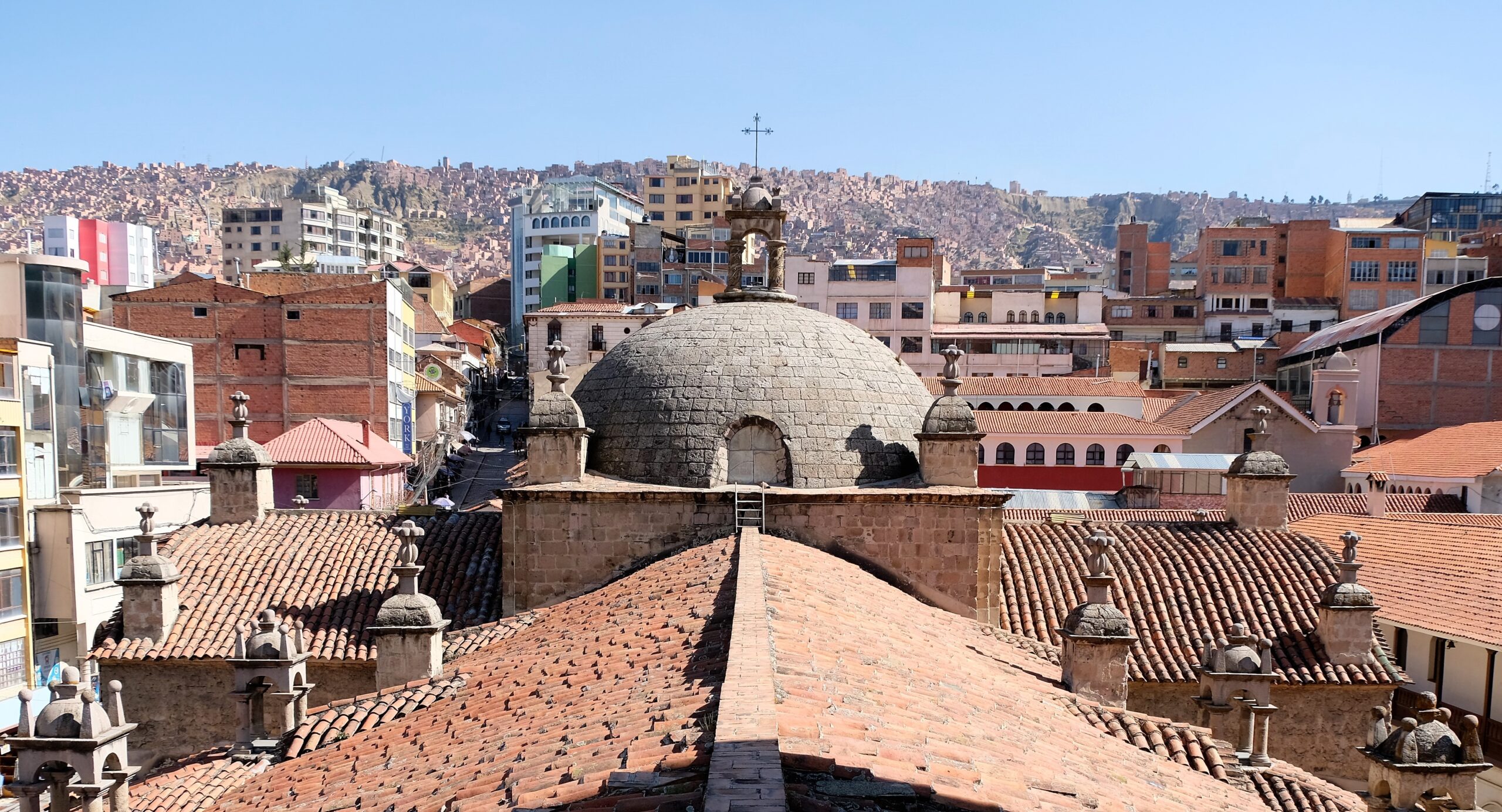
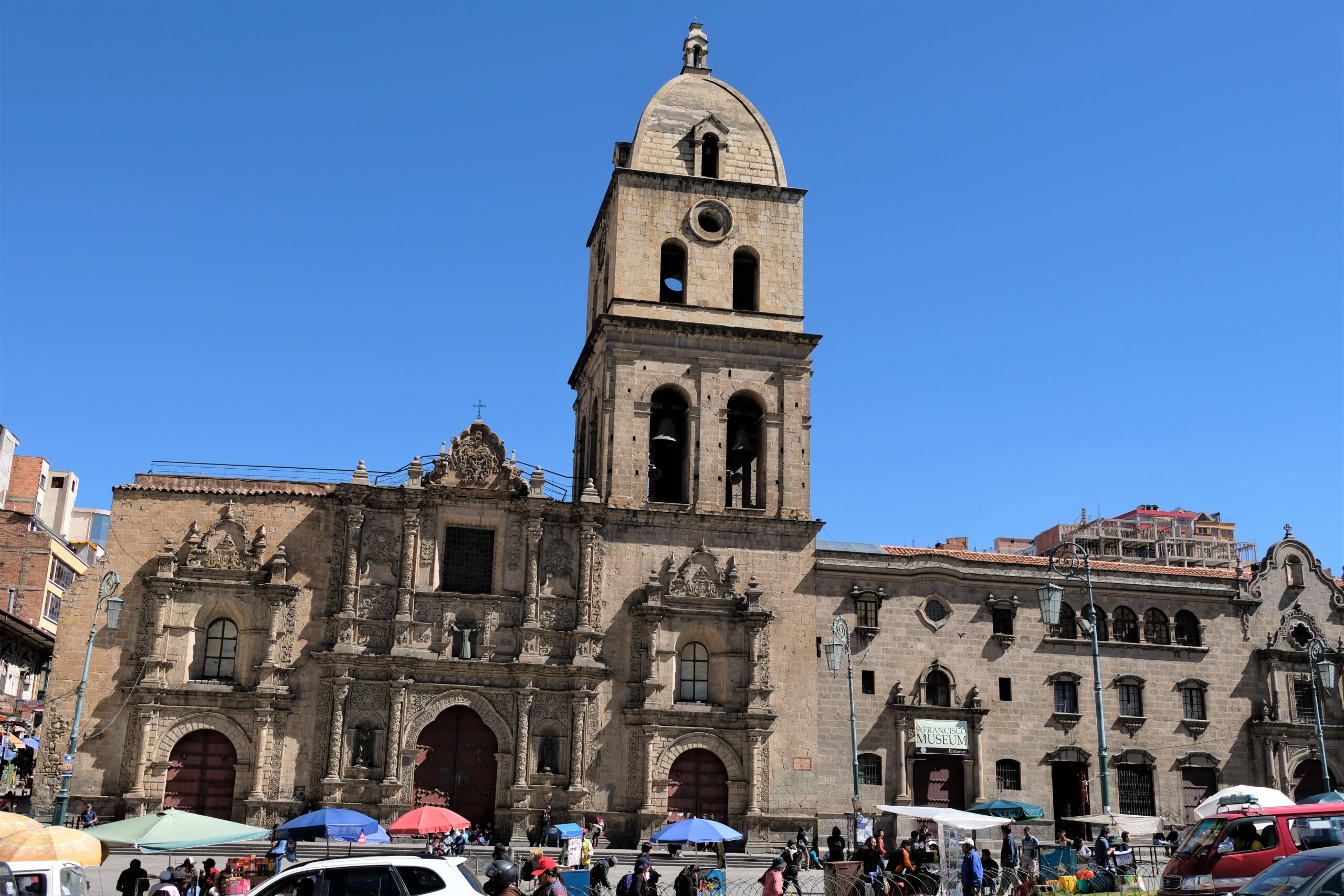
Travel tip – Sim Card
Sorting out a local sim card is easier in some places compared to others. Airports aren’t always the best places to get a good deal, unless a major network has a shop there you often get a bad deal – not always. I arrived early at El Alto airport before most stores were open so that wasn’t even an option, glad I didn’t. Spending a few minutes researching which network had the best coverage, Entel came up tops. A few people I met during my time in Bolivia got cheaper options with other networks but complained about bad signal.
There’s an Entel store around the less than 1km from Hotel Sagarnaga, on Calle Ayacucho (this is the link on Google Maps). Anyway, the reason I’m carrying on about this is because the place doesn’t look like a mobile or network store, but it is. You do need to take your passport with, the process took me less than 15 minutes to arrange. I paid between £18-23 (can’t remember the exact price) and that got me 10GB data and can’t remember how many calling minutes. Service was good, even in remote areas. The only place I had problems with signal was in the middle of Uyuni salt flats…understandable.
Bolivia gets much better I promise
Appreciate this was a boring post, things get considerably more interesting I promise. Can’t even use the photos to get away from the blandness of this post ?! When travelling not all days are packed with interesting stories or experiences…that’s how things go. Slow starts seem to be a pattern with me.
